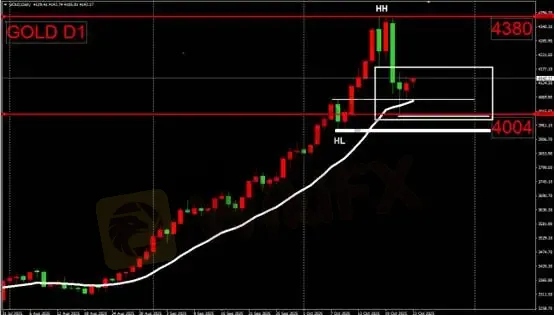简体中文
繁體中文
English
Pусский
日本語
ภาษาไทย
Tiếng Việt
Bahasa Indonesia
Español
हिन्दी
Filippiiniläinen
Français
Deutsch
Português
Türkçe
한국어
العربية
Fed Plans to Ease Bank Capital Requirements
Abstract:(Figure 1. Source: Reuters)Under the Basel III framework, regulators require banks to set aside a portion of their capital as a risk buffer to prevent insolvency in the event of loan defaults or inves

(Figure 1. Source: Reuters)
Under the Basel III framework, regulators require banks to set aside a portion of their capital as a risk buffer to prevent insolvency in the event of loan defaults or investment losses.
In other words, banks cannot freely lend or invest these reserves — the funds are effectively “locked away” as insurance against systemic risk.
Now, the Federal Reserve is considering loosening this rule, proposing a revised framework that reduces capital buffer requirements from the previous 19% to a range between 3% and 7%.
Compared to the earlier 19%, this is a much softer stance — akin to cutting a 100-question final exam down to 30. For banks, this means less money tied up as reserves and more liquidity available for lending, investment, and trading, effectively injecting more capital into the broader financial system.
Relaxing capital requirements frees up liquidity, allowing funds to circulate more flexibly in the market. Major Wall Street banks such as JPMorgan Chase and Citigroup could allocate more capital toward loans, equity investments, and M&A activities — all of which would help stimulate market momentum. As economic stability improves, equity markets could gain upward traction; and with stronger investor sentiment, the U.S. dollar would likely maintain a firm tone.
Historically, when capital requirements were previously raised to 19%, financial stocks tumbled, dragging the dollar lower as well. This time, the Feds more measured adjustment to 3%–7% suggests a balanced approach — aiming to support liquidity without triggering excessive volatility or systemic risk.
The DXY Index currently reflects this sentiment, showing resilience in the U.S. economy and sustained demand for the dollar. If the Fed officially eases the rule, gold prices are likely to remain under pressure, as risk appetite strengthens and safe-haven demand wanes.
However, markets rarely move in a straight line. Should former President Trump reignite trade tensions, global risk aversion could resurface, reviving demand for gold. Similarly, if upcoming U.S. economic data weakens and the Fed continues to cut rates, renewed safe-haven buying could drive gold higher again.
Gold Technical Analysis

Daily Chart — Range-Bound Consolidation
With few major data releases this week, market sentiment has remained stable, and gold continues to trade in a narrow consolidation range, reflecting a balance between bulls and bears.
On Thursday, gold held firm above $4,066/oz support, closing higher for the day. Prices reached an intraday high of $4,154/oz, near the $4,150–$4,161/oz resistance zone, signaling strengthening buying momentum and gradually improving bullish confidence.
Prices remain above the 20-day EMA ($4,105/oz), indicating that upside momentum persists. However, whether the bulls can trigger a new rally will depend on a decisive breakout above the $4,150–$4,161/oz resistance area.
Key Levels
20-Day EMA: $4,105/oz
Bull-Bear Pivot: $4,125/oz
Trading Strategy
During the Asian session, gold is still confined within a $4,065–$4,161/oz range. Traders are advised to wait for a clear breakout before entering positions.
Bullish scenario: Enter long positions if prices break above $4,161/oz with strong volume confirmation.
Bearish scenario: Consider short positions if gold drops below $4,065/oz, following the downside momentum.
Until breakout conditions are met, stay patient and avoid emotional trading. Consistency, discipline, and risk control remain key to long-term success.
Risk Management
Limit losses to 2%–5% per trade.
Keep total daily losses below 10%.
Use trailing stops to lock in profits once trades move favorably.
Risk Disclaimer:
The views, analyses, and price levels discussed above are provided for general market commentary only and do not represent the official stance of this platform. Readers should conduct their own due diligence and trade responsibly.
Disclaimer:
The views in this article only represent the author's personal views, and do not constitute investment advice on this platform. This platform does not guarantee the accuracy, completeness and timeliness of the information in the article, and will not be liable for any loss caused by the use of or reliance on the information in the article.
WikiFX Broker
Latest News
The "Demo Trap": Why You Win Millions for Fun but Lose Your Rent in Real Life
Want to Trade with $100,000? The Truth About Prop Firms
Stop Bleeding Cash: Why Most Forex Rookies Get Crushed
The Silent Killer: Why Your Biggest Wins Often Precede Your Worst Crash
FAKE TRADES ALERT: How Long Candles Are Used to Mislead Retail Traders
Razor Markets Regulation Explained: Real User Reviews Exposed!!
Equiti Regulation: Compliance and Licensing Info
November's inflation report is the first to be released after the shutdown. Here's what to expect
Stop Chasing Green Candles: 3 Fatal Mistakes You’re Making in Trend Trading
Tradgrip Review 2025: Regulation Details, User Experiences & Complaints
Currency Calculator



